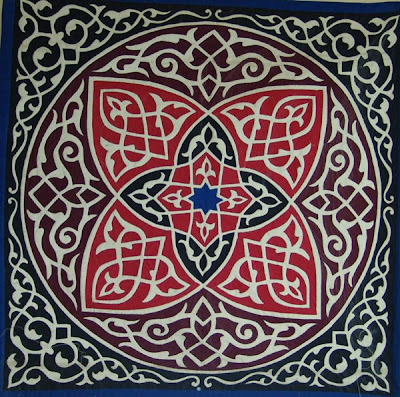Cairo, Egypt
For excessive detail and superfluous factoids, check out the captions of my
Web Album. We saw a ton of historic buildings today, so many that even my enthusiasm for random knowledge began to wane. I'll just hit you with the highlights here:
Al Azhar
The first famous universities for Islamic law and its related disciplines were in Basra and Kufa in modern-day Iraq, but the oldest university of Islamic sciences currently in operation, and by far the most famous, is Cairo's Al-Azhar University. A degree from here will get you a job in Islamic jurisprudence anywhere in the world. You might call it the Oxford or Cambridge of the Islamic world. Until less than a decade ago, Al-Azhar University was housed in the complex of madrasas, mausoleums, libraries and other related buildings that have accreted around the Al-Azhar Mosque, where we started our tour.
A Mausoleum Beyond Compare
The Qalawun Complex includes a mausoleum decorated with unbelievably intricate and monumental craftsmanship the likes of which you don't see anywhere in Jordan! There are many mausoleums in Islamic Cairo, especially on the main thoroughfare known as the Street Between 2 Palaces, aka
al-Mu'izz Street, referring to two Fatamid palaces whose foundations lie beneath many of the other sites we saw. We saw several mausoleums, but this one just took my breath away!
Madrasas, Madrasas!
We saw many madrasas on this tour, schools established by endowments of powerful Muslim leaders to teach the principals of one or more of the five schools of Islamic jurisprudence. My favorite was Sultan Barquq's madrasa, which also taught Sufism, the mystic strain of Islam.
Cairo's Costco (but live-in!)
Merchant wholesalers traveled by caravan across the vast Islamic world, and when they reached a city, they would have to stay somewhere while they sold their wares. Known as a
wekala in Arabic, a
khan in Turkish, and a
caravanserai in Persian, these structures were part market, part hotel, and could even accommodate a successful merchant's "wife in every port." Other caravanserai were positioned near water sources along major trade routes through the deserts, like
Qasr Harranah in Jordan.
Bayt Al-Suhaymi
As much as I love history's monumental structures, I also adore restored homes, giving a more mundane look into history. Unfortunately, a crew was filming some period piece in the Suhaymi House, so we didn't get to enjoy as much of it as I'd have liked. One of many things to go back for!
...And Much More!
There were many other things we saw that you'll find in my
Web Album, but this about covers my favorite parts of the morning. (Was it really just a morning?)









